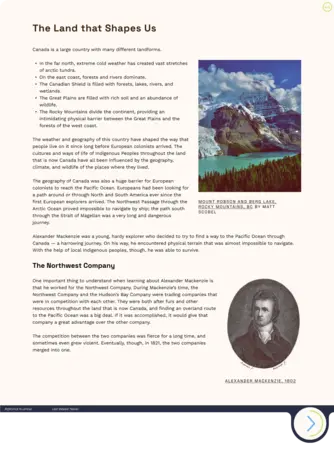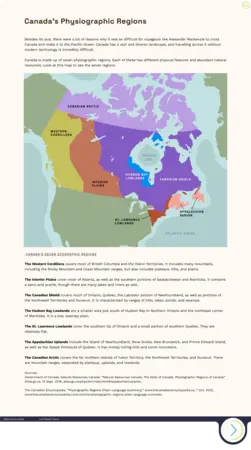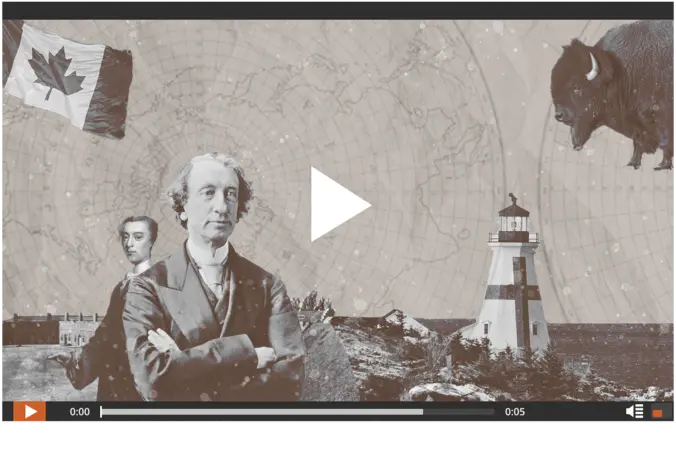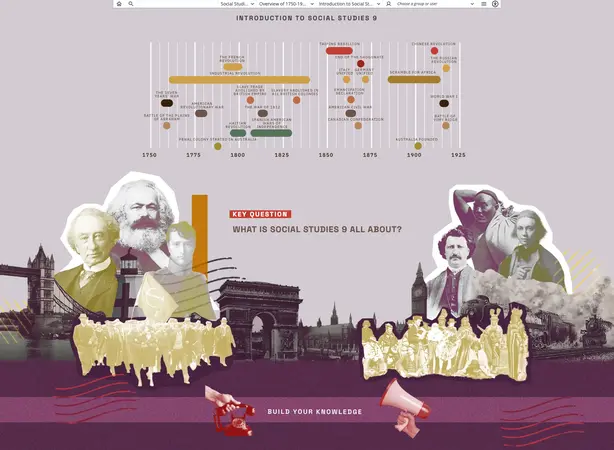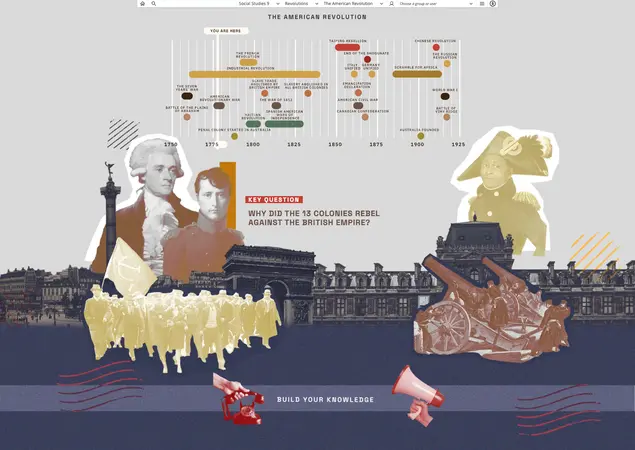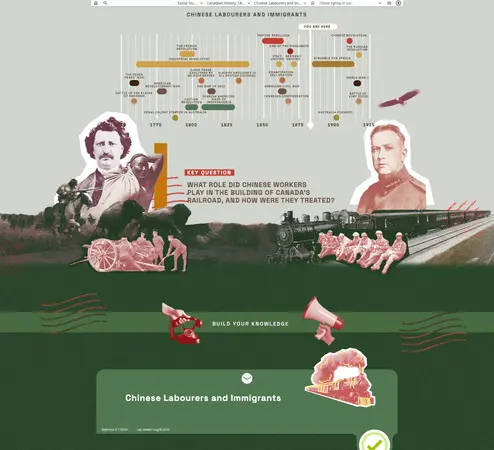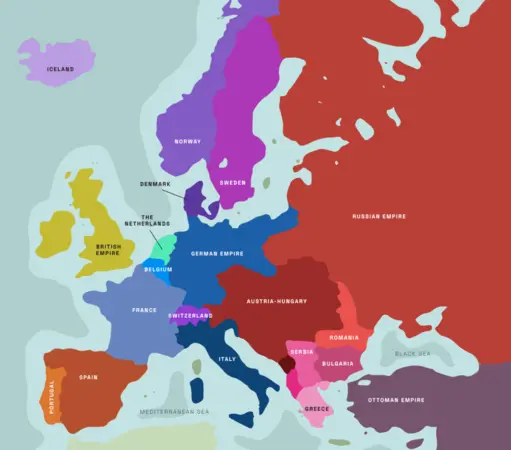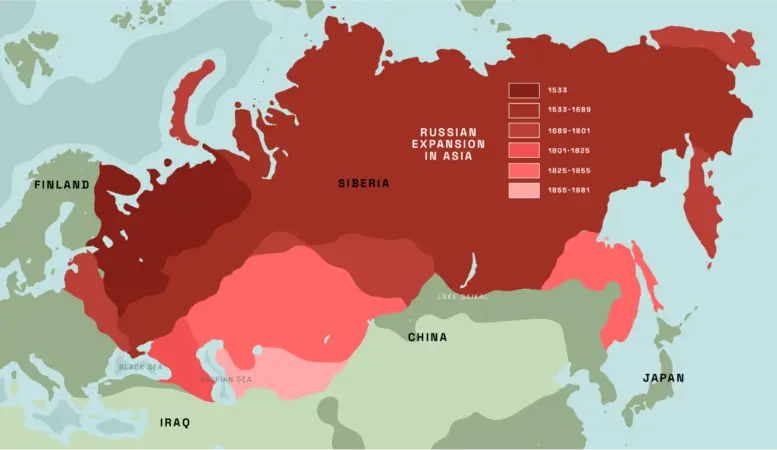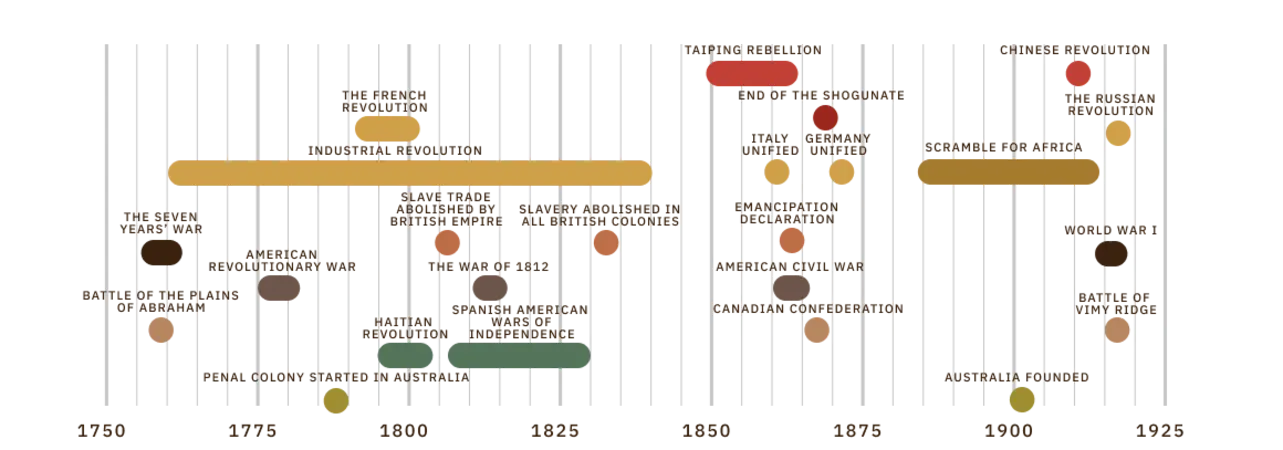Social Studies 9
Human history is long, but the last 300 years or so have been particularly impactful. A comparison of the world in 1750 to the world today shows massive changes. There are technologies that fit in your pocket that would have been inconceivable in 1750; some of the wealthiest and most powerful nations in the world today did not even exist in 1750. How did all of these changes take place?
Social Studies 9 asks the question, “What are the forces that shape the world?” The course digs into human history between 1750 and 1919 — from the start of the Industrial Revolution to the end of World War 1. This was a revolutionary time period in every way. The way people thought changed; the way people made money changed; the way empires and kingdoms were run changed; telephones and radios and automobiles and airplanes were all invented, revolutionizing the way people communicate and travel. There were also literal revolutions in the United States, France, Haiti, China, Russia, and many other places, causing millions of people to die, but transforming power structures and completely changing the way people thought about how governments, countries and empires should be run. What were the forces that caused these events?
At the same time as all of these changes were happening in the world, life was transforming in Canada as well. Major events like the Battle of the Plains of Abraham, the War of 1812, Confederation, the signing of the Indian Act, and the Battle of Vimy Ridge all shaped the birth and growth of a nation. This course will give students an opportunity to hear stories about Canada and the world so they can see that the forces that shaped the world for the last 300 years continue to impact their lives today.
The StudyForge Difference
StudyForge Social Studies 9 can be taught in an online asynchronous, online synchronous, hybrid, or face-to-face format. Most readings include multiple pedagogical layers to enhance student learning, including an audio file for readings, fill-in-the-blank note-packages with key words highlighted in the text, and regular formative quizzes. Students can also retake every quiz, which are randomized, to encourage them to strive towards mastery. Challenging vocabulary words are tagged with hover-over definitions so students can develop their vocabulary without needing to go to external sources. Assessments and activities are thought-provoking and engaging, including ones that give students a chance to examine primary source documents. A timeline at the top of every relevant lesson helps orient the students to the lesson’s time period, also indicating the eras that are happening concurrently elsewhere in the world.
Table of Contents
- Lesson 1: Introduction to Social Studies 9
- Lesson 2: Key Terms and Ideas
- Lesson 3: The World Before 1750
- Lesson 4: The British Empire From 1750 to 1919
- Lesson 5: France From 1750 to 1919
- Lesson 6: Germany and Italy From 1750 to 1919
- Lesson 7: Russia from 1750 to 1919
- Lesson 8: China From 1750 to 1919
- Lesson 9: Japan From 1750 to 1919
- Lesson 10: Australia from 1750 to 1919
- Lesson 11: Africa from 1750 to 1919
- Lesson 12: Latin America from 1750 to 1919
- Lesson 13: The United States From 1750 to 1919
- Lesson 14: Canada From 1750 to 1919
- Lesson 15: Changes and Forces Slideshow
- Lesson 1: Technology in Your Life
- Lesson 2: Industrial Revolution
- Lesson 3: Child Labour in the Industrial Revolution
- Lesson 4: Transportation Technologies
- Lesson 5: Communication Technologies
-
- Lesson 6: Abolitionism
- Lesson 7: Labour Rights
- Lesson 8: Women’s Voting Rights
- Lesson 9: Marxism and Communism
- Lesson 10: Representative Government
- Lesson 11: Nationalism
- Lesson 12: Ideas that Changed the World
- Lesson 13: Creating Your Presentation
- Lesson 1: The American Revolution
- Lesson 2: Loyalists and Patriots
- Lesson 3: The French Revolution, Part 1
- Lesson 4: The French Revolution, Part 2
- Lesson 5: The Morality of a Revolution
- Lesson 6: The Haitian Revolution, Part 1
- Lesson 7: The Haitian Revolution, Part 2
- Lesson 8: The Taiping Rebellion
- Lesson 9: The Russian Revolution
- Lesson 10: Ingredients of a Revolution Essay, Part 1
- Lesson 11: Ingredients of a Revolution Essay, Rough Draft
- Lesson 12: Ingredients of a Revolution Essay, Final Copy
- Lesson 1: The Battle of the Plains of Abraham
- Lesson 2: The Battle for Resources
- Lesson 3: The Land that Shapes Us
- Lesson 4: The War of 1812, Part 1
- Lesson 5: The War of 1812, Part 2
- Lesson 6: Who Won the War of 1812?
- Lesson 7: Rebellions of 1837-1838, Part 1
- Lesson 8: The Durham Report
- Lesson 9: Responsible Government
- Lesson 10: Connecting the Country, Part 1
- Lesson 11: Connecting the Country, Part 2
- Lesson 12; The BC Gold Rush
- Lesson 13: Confederation
- Lesson 14: John A. Macdonald
- Lesson 1: The Transcontinental Railway
- Lesson 2: Chinese Labourers and Immigrants
- Lesson 3: The Klondike Gold Rush
- Lesson 4: The Red River Rebellion
- Lesson 5: The Northwest Rebellion
- Lesson 6: The First Shot
- Lesson 7: The Indian Act
- Lesson 8: Residential Schools
- Lesson 9: Canada in World War 1
- Lesson 10: The Battle of Vimy Ridge
- Lesson 11: Other Contributors to World War 1
- Lesson 12: Canadian History Review
- Lesson 1: Final Project Preparation
- Lesson 2: Final Project Writing
- Lesson 3: Final Project Creation
- Lesson 4: Project Finalization
Experience a lesson as your students would
Course Features
- Deliberately global focus to avoid an exclusive focus on Western nations
- First unit provides a basic overview of world history from 1750-1919, giving students a framework to attach all other knowledge to as the course progresses
- Appeals to multiple learning styles with a variety of choice in completing major assignments and projects
- Timeline on every lesson orients students to the time period the lesson covers and what is happening elsewhere in the world
- Every content lesson has a note package with a fill-in-the-blank outline; keywords are underlined in the text to indicate their significance for students
- Frequent quizzes allow students to refresh key information regularly
- Vocabulary includes hover-over definitions so students can build vocabulary without needing to go to external sources
